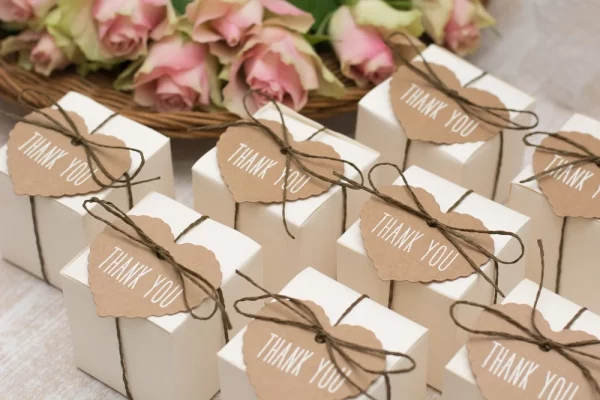When did party favors become a thing? Would you like to know? Are you ready to examine the history of party favors? We will guide you all the way through, just read along.
Party favors which are those adorable little packs of gratitude and happiness have evolved into a mainstay of festive occasions.
Parties of all kinds frequently include these little gifts that cheer up attendees, from birthdays to weddings.
But have you ever pondered the origin of party favors? We will go on a historical journey to discover the origins of party favors in this article. Also, we will explore their evolution and the cultural elements that influenced their appeal.
When Did Party Favors Become a Thing?
Party favor offering has a long history dating back to early cultures. One of the earliest civilizations to give tokens or trinkets to guests at festivals is thought to have been the ancient Egyptians.
These early party favors frequently included amulets or miniature figures that represented fertility, protection, or good fortune. These favors served as a means of blessing the attendees and spreading luck to them.
The evolution of party favors is cited thus:
1. Sugared Almonds and Bonbonnières from Medieval Europe
In Europe, the custom of handing out party favors persisted into the Middle Ages. Rich nobility would frequently give their guests bonbonnières, elaborate boxes containing sweets, perfumes, or priceless artifacts.
For the attendees, these favors acted as status symbols and tokens of appreciation. Sugared almonds were another favorite party favor at this time. These sugar-coated almonds were frequently packaged in attractive boxes or bags.
Almonds that had been sugared were a symbol of good wishes for the future, with the sweetness of the sugar standing in for joy and happiness and the bitterness of the almonds signifying the difficulties of life.
2. Love knots and romantic tokens from the Victorian Era
Party favors experienced a revival in prominence during the Victorian era. Love knots became a popular option for wedding favors at this time.
These elaborate knots, which were frequently fashioned of cloth or ribbon, were given to guests as a thank-you for attending and symbolized the unbreakable bond of marriage.
The Victorian era also saw a boom in sentimental and adorably romantic party favors. As tokens of their love and loyalty, couples would trade little trinkets like miniature portraits or lockets containing a lock of hair.
The hosts and their guests’ emotional connection ware strengthened by these favors, which served as treasured keepsakes.
3. The 20th Century Evolution of Children’s Party Favors
The custom of party favors underwent a change in the 20th century, especially for kid’s parties. As play and childhood became more valued, party favors shifted to emphasize the enjoyment of the younger guests.
Children were surprised and entertained by the popularity of little toys, puzzles, and novelty goods.
4. Modern and Contemporary Times: Individuality and Creativity
Party favors have developed recently, adjusting to shifting trends and individual tastes. With hosts personalizing favors to represent the topic or interests of the event, the emphasis on innovation and customization has grown in importance.
Party favors can come in a variety of forms, from customized gifts and original crafts to themed goody bags and tasty delicacies, and they now serve as a showcase for the host’s creativity and compassion.
Why do People Give Party Bags?
Party bags have grown to be an essential component of gatherings, providing guests—especially kids—with a sense of surprise and excitement.
These tiny gift-filled packets occupy a special place in our collective memories. They are frequently given out at the conclusion of birthday parties or other celebratory occasions.
But why are party bags given out? What motivates this age-old custom? Let’s consider some of the psychology of party bag:
- To show gratitude and appreciation expression.
- For optimizing the party experience.
- Making enduring and lasting memories.
- Promoting social interactions.
- Also, promoting kindness and sharing.
- Managing expectations and reducing disappointment.
No doubt, party bags have developed into a tenacious custom that enhances events with an extra dose of happiness and gratitude.
Party bags are essential to the psychology of celebrations because they let people express their thanks, improve their party experience, make lasting memories, develop social relationships, encourage giving, or lessen disappointment.
Also, they serve as a concrete expression of gratitude, entertaining visitors of all ages and leaving a lasting good impression.
Feel free to accept it with a smile since it contains more than just trinkets; it also conveys the host’s thoughtfulness and the spirit of celebration.
Bottom Line
Party favor giving has a long and varied history that crosses all cultures and time periods. Party favors have changed from beloved mementos of appreciation and joy to emblems of luck and grandeur from ancient civilizations to modern gatherings.
READ ALSO:
- What is good to put in a Party Bag?
- What to put in party bags for 18-year-olds?
- What to put in a 5-year-old party pack?
Interestingly, the custom of party favors is still alive and well, enhancing our celebrations and leaving both hosts and guests with priceless memories, whether it’s a wedding, a birthday party, or any other festive event.


